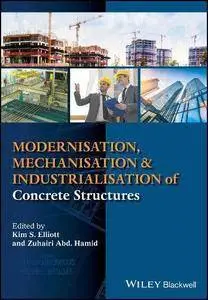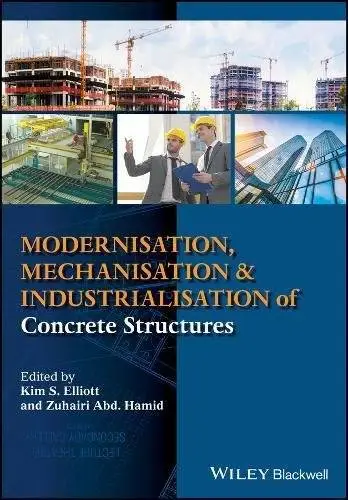Modernisation, Mechanisation and Industrialisation of Concrete Structures
Wiley Blackwell | English | May 2017 | ISBN-10: 1118876490 | 504 pages | PDF | 32.55 mb
Wiley Blackwell | English | May 2017 | ISBN-10: 1118876490 | 504 pages | PDF | 32.55 mb
by Kim S. Elliott (Editor), Zuhairi Abd. Hamid (Editor)
Precast concrete can provide high-quality, durable and reproducible construction components in a safe and economical manner. Developments in concrete technology and building information modelling, as well as the application of best practice in design and manufacturing techniques are all driving significant gains in the efficiency of precast concrete production, providing components with exceptional utility in the construction process.
Modernisation, Mechanisation and Industrialisation of Concrete Structures highlights the use of automation and industrialisation in the design and manufacture of precast concrete components, showing how:
design and manufacturing techniques can be best exploited for the construction of modern precast concrete buildings and structures
an industrialised building system ethos can control the supply chain from client to sub-contractor, and can best utilise building information modelling methods and design/detailing software
concepts of automation and robotics can be applied to concrete production
industrialisation of off-site production and on-site processes can be exploited in construction projects
Technologies discussed include the design, development and automated manufacture of façade panels, insulated panels, twin walls, hollow core slabs, Omnia type floors with welded girders and reinforcement cages. Automated finishing, polishing and etching are also covered. Written for structural, mechanical and services consultants, precast producers and prefabrication designers, it will also be of interest to academics and post graduate students in civil engineering, mechanical engineering, building technology, sustainability and production engineering.
About the Author
Kim S. Elliott is a consultant to the precast industry in the UK and Malaysia. He was Senior Lecturer in the School of Civil Engineering at Nottingham University from 1987-2010, and was formerly at Trent Concrete Structures Ltd., one of the UK's leading precast concrete manufacturers. An active researcher into the behaviour of precast concrete structures, he has published extensively on the subject. He is a member of FIB Commission on Prefabrication.
Zuhairi Abd. Hamid is Executive Director of the Construction Research Institute of Malaysia (CREAM). With more than 32 years of experience in the construction industry, his research interests and expertise falls within the area of Strategic Management of IT in Construction, Strategic Facilities Management in the Health Sector, Structural dynamics (wind engineering and earthquake engineering), prefabricated building construction and the Open Building System.



